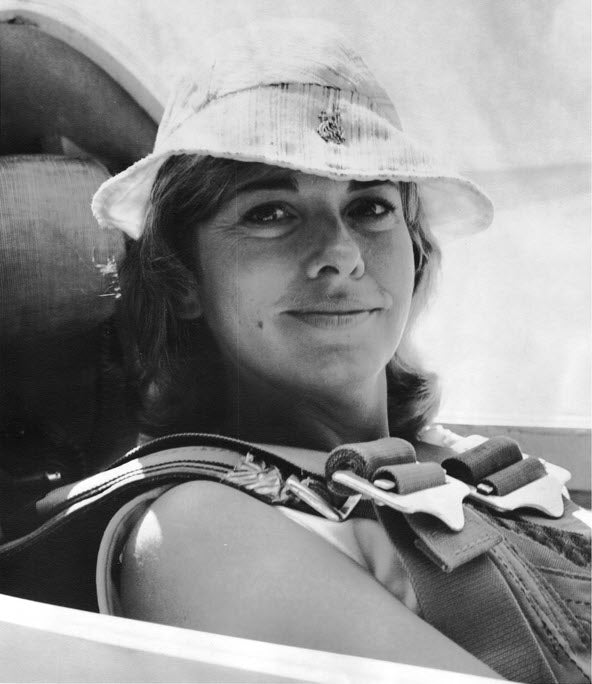A Boeing 707 Death Spiral
The Boeing 707 was one of the first jet powered intercontinental aircraft, it had four engines and one of the most interesting features of the aircraft were it's swept wings and tail surfaces.
Specifications:
- Length: 152 feet, 11 inches;
- Wing span: 145 feet, 9 inches;
- Height: 42 feet, 5 inches;
- Empty weight: 142,600 pounds;
- Max take off weight: 312,000 pounds;
- Fuel capacity: 110,231 pounds of JP-1 fuel.
Performance:
- Maximum operating air speed (Mmo) of Mach .887 above 25,000 feet;
- Maximum indicated air speed (Vmo): 378 knots;
- At Maximum Take Off Weight minimum runway length was: 10,840 feet;
- Range: 4,298 miles
1,010 Boeing 707s were built between 1958 and 1979.
U.S. Figure Skating Association
In 1921 the U.S. Figure Skating Association was formed to promote figure skating in the United States, and consisted of a number of figure skating clubs scattered throughout the US.
In 1961 the U.S. Figure Skating Championships were held at the World Arena in Colorado Springs, CO, from January 25th through January 29th.
The winners of that competition determined the U.S. team which would then compete ithe the 1961 World Championships to be held in Prague in the Czech Republic.
This was the first time the U.S. Figure Skating Championships were broadcast on television by CBS, bringing a lot of attention of Americans to this sport.
Once the winners had been decided on January 29th, 1961, the team began preparing for their trip to the World Championships.
On February 14, 1961, the team left for the World Championship competion on Sabena Flight 548 from New York's Idelwild Airport (now known as JFK Airport) enroute to Brussels, Belgium.
Of the passengers on that flight were 34 members of the U.S. Figure Skating Team.
Sabena Flight 548
The Boeing 707 aircraft for this flight had arrived earlier from Brussels to New York, and that flight arrived with no issues.
The flight was scheduled to depart New York on the evening of February 14, 1961, carrying a crew of 11 and 61 passengers, including the U.S. Figure Skating Team.
The pilots for this flight were ex-military pilots, each with over 20 years of flying experience, Captain Ludovic Marie Antoine Lambrechts and First Officer Jean Roy.

Captain Ludovic Marie Antoine Lambrechts of Sabena Airlines flight 548.

The 1961 U.S. Figure Skating Team as they are boarding Sabena flight 548 on Feb. 14, 1961.
Sabena Flight 548 departed New York and the transatlantic flight was uneventful and was expecting to land on ruway 20 at the Brussels airport.
The flight arrived in the vicinity of the Brussels airport at approximatley 10:00 am local time.
As the Boeing 707 lined up for final approach to runway 20 a smaller aircraft had just landed and was still on the active runway.
As Sabena Flight 548 reached a descent altitude to 900 feet the crew decided to go around and line up for landing again.
The crew increased power, began to climb and retracted the landing gear.
As the pilots began their go around they experienced a problem when the pilot flying began trimming the horizontal stabilizer to bring the nose up to the climb attitude.
Unfortunately, the trim motor kept moving the horizontal stabilizer to a full nose up pitch making the aircraft very difficult to control and the pilots immediately knew something had gone wrong.
To correct the sudden pitch up the pilots pushed the control column all the way forward, but this had little effect. The pilots continued pushing the control column forward, then tried to bank the aircraft to the left.
This made the nose go down and gave them more airspeed, and they discovered that this kept them from losing too much speed and stalling.
By the time they had completed almost four complete 360 degree turns the nose pitched up once again, losing speed, and stalling the airplane, which then entered a nose dive into the ground.
The aircraft then started a turn and the bank angle of the aircraft began to increase. The turn continued into a series of three orbits with the bank angle continuing to increase until the 707 stalled and crashed.

A map showing the track of the Boeing 707 as it completed three 360 degree turns and then crashed into an open field 1.9 miles northeast of the airport.
Everyone aboard the aircraft died in the crash, as well as one person on the ground. Another person on the ground lost a leg caused by flying debris from the crashing aircraft.

A photograph of the crash site of Sabena Flight 548 on February 15, 1961.

A Sports Illustrated cover showing one of the girl skaters: Laurence Owen.
This was the first crash of a Boeing 707 in commercial service.
The International Skating Union cancelled the World Championship Tournement that year out of respect for the loss of the US Figure Skating team.
Postscript
After the crash taking the lives of the US Figure Skating team the U.S. Figure Skating Memorial Fund was established, and the fund has continued to this day.
It provides help for promising skaters who lack funding for equipment and training.
I hope you enjoyed this trip through some of the history of aviation. If you enjoyed this trip, and are new to this newsletter, sign up to receive your own weekly newsletter here: Subscribe here!
Until next time, keep your eyes safe and focused on what's ahead of you, Hersch!







Leave a comment
This site is protected by hCaptcha and the hCaptcha Privacy Policy and Terms of Service apply.